Want to get your creative juices flowing? 3D modeling programs are the perfect playground for bringing your wildest ideas to life! Whether you’re crafting simple shapes or diving into intricate landscapes, these tools let you build everything from characters for video games to breathtaking environments for films.
alt=”A computer screen displaying six 3D modeling software programs—each with its logo and interface elements”>
But let’s be real: choosing the right software can feel like finding a needle in a haystack.
With so many choices, where do you even start? The best 3D modeling software for you hinges on what you want to create and how comfortable you are with these kinds of tools.
Some software is perfect for beginners, while others are tailored for seasoned pros.
Ready to find your match? Let’s dive into six fantastic options for every skill level.
1) Blender
First up, we have Blender! This free and open-source powerhouse is a gem in the 3D world.
It’s your one-stop shop for modeling, sculpting, animation—you name it.
Plus, it’s beloved by both hobbyists and professionals.
Can you beat a free tool with that kind of versatility? I don’t think so.
Blender comes packed with a range of modeling tools that simplify creating and editing 3D models.
From sculpting to UV unwrapping, you can do it all without breaking a sweat (or the bank!).
Sure, the interface might feel a bit overwhelming at first, but once you get going, it’s smooth sailing.
There’s a bustling community and a treasure trove of tutorials ready to back you up.
And here’s the kicker: you can grab it for free and start creating right now.
Whether you’re designing a simple model or a complex animation, Blender does it all.
With regular updates rolling out, it’s an ideal tool for those looking to get deep into the 3D modeling game.
2) Autodesk Maya
Maya is another heavyweight champion in the 3D arena.
You’ll find it in the hands of top artists creating everything from stunning characters to jaw-dropping visual effects in movies and video games.
It’s like the Swiss Army knife of 3D software!
Maya goes beyond basic modeling; you can dive into animation, rigging, and simulation.
Want to nail those complex shots? You’re covered! Sure, there’s a learning curve, but with persistence, you can whip up some astonishing creations that’ll wow your audience.
Many pros thrive on the flexibility Maya offers—customize it to suit your unique workflow! If animation or game design is your jam, give Maya a shot.
It could become your go-to favorite.
3) ZBrush
If digital sculpting is your thing, ZBrush is where the magic happens.
It’s the go-to choice for creating detailed characters and objects that really stand out.
You’ll appreciate ZBrush’s customizable brushes, which let you shape, texture, and paint virtual clay as easily as a kid molds real clay.
It’s widely used in film, game development, and even toy design, so you know it’s good.
New to 3D modeling? No worries—ZBrush has a user-friendly interface that’s surprisingly easy to learn.
Once you get the hang of it, you can create intricate designs and models with just a few clicks.
And the best part? It plays nicely with other 3D software, making it a flexible companion in your modeling toolkit!
4) Cinema 4D
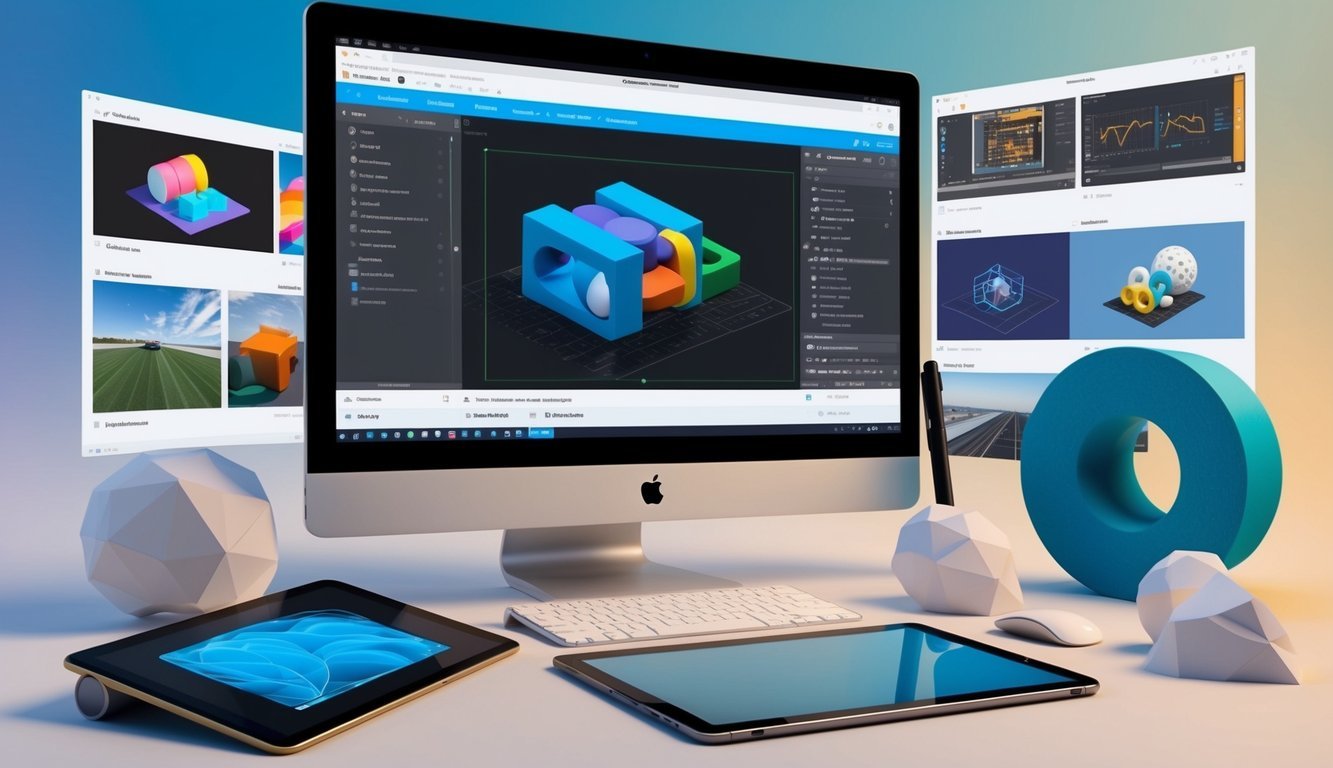
Cinema 4D has made a name for itself among 3D artists for being user-friendly, yet powerful.
It’s packed with features and boasts a solid set of preset objects and materials to kickstart your creativity.
If animation is your forte, you’ll love how this software allows you to create lively characters with fluid movements that just pop off the screen.
It’s also a popular choice in film for special effects and creating detailed 3D models of everything from car parts to stunning landscapes.
New to 3D modeling? No sweat! Cinema 4D’s approachable interface means you’ll be crafting fantastic 3D art before you know it.
Plus, it plays well with other software, so you can seamlessly integrate it into your workflow.
5) SketchUp
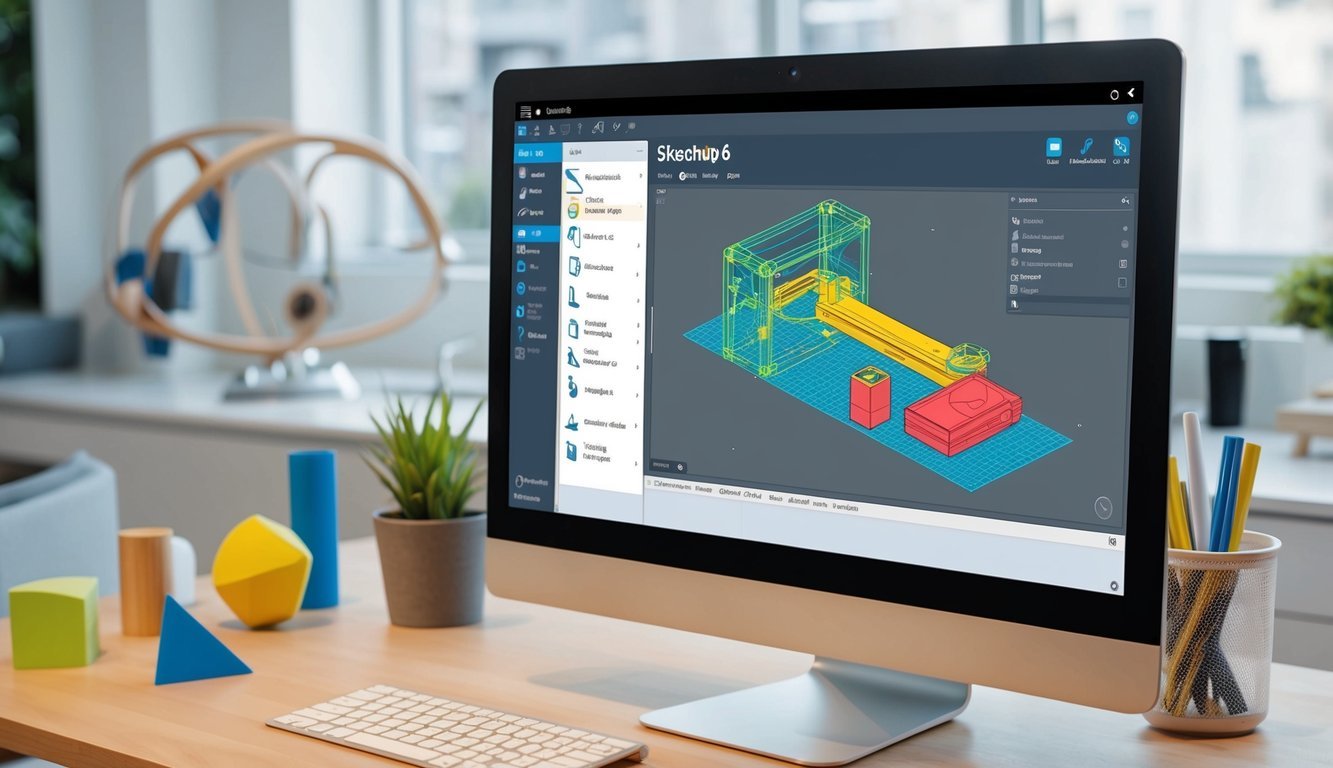
SketchUp is like your friendly neighborhood entry into the world of 3D modeling, especially if you’re leaning toward architectural design.
It’s incredibly easy to use and perfect for anyone looking to dip their toes into 3D modeling.
No downloading necessary, either! You can jump into 3D modeling for free, crafting buildings, interiors, and landscapes with ease.
Plus, you get access to a myriad of ready-made 3D models to speed up your projects.
One neat feature? You can add textures and colors to give your models a realistic touch.
And if you’re into 3D printing, SketchUp has your back too—you can export your designs in formats ready for the printer.
The free version is great to get started, but if you’re ready to level up, there are paid options that expand your toolkit even further.
6) 3ds Max
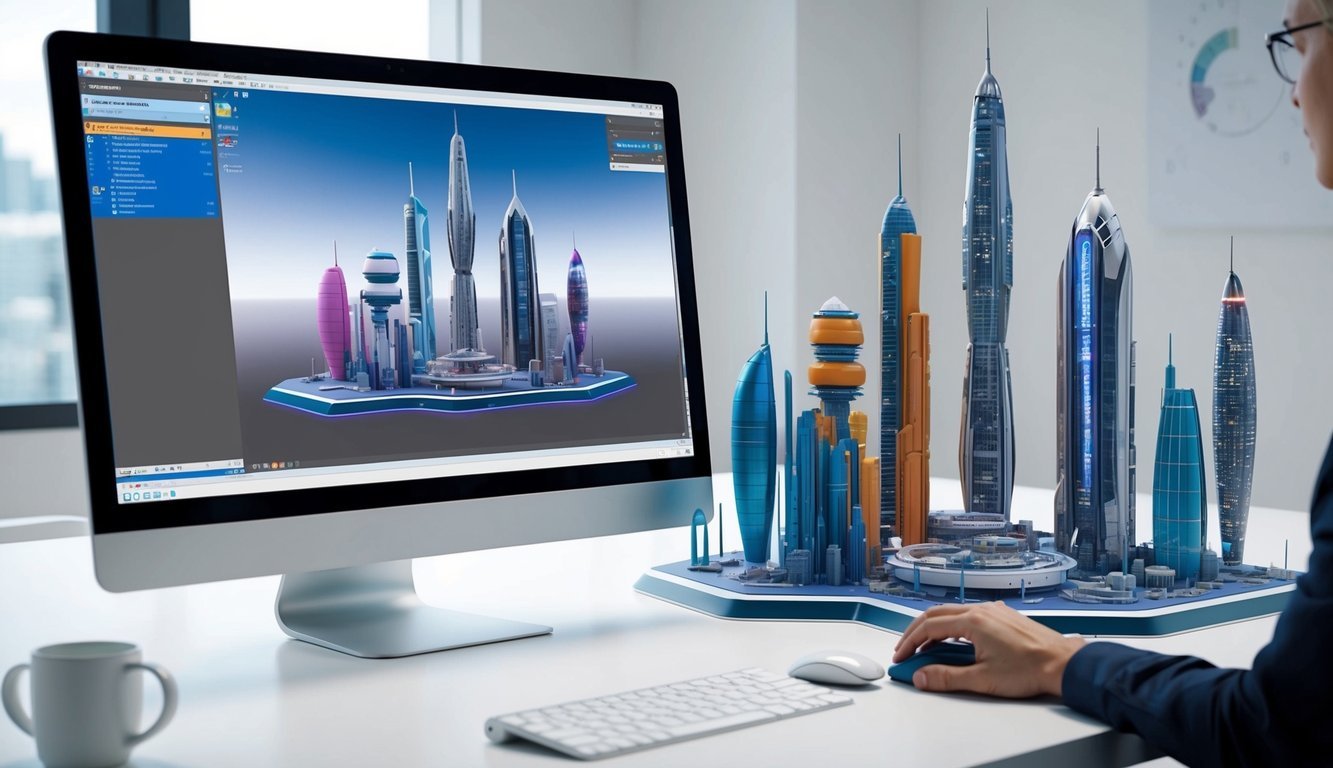
Last, but certainly not least, is 3ds Max.
This software is a beloved tool among game developers, architects, and product designers.
It’s all about efficiency, making complex 3D scenes feel like a walk in the park.
Create stunning visual effects for movies or design intricate interiors with ease—this software has the tools to help you shine.
Plus, with its powerful rendering capabilities, your models can look incredibly lifelike.
And as you might expect, there
are numerous online courses and tutorials to help you sharpen your skills quickly.
Why 3D Modeling Matters
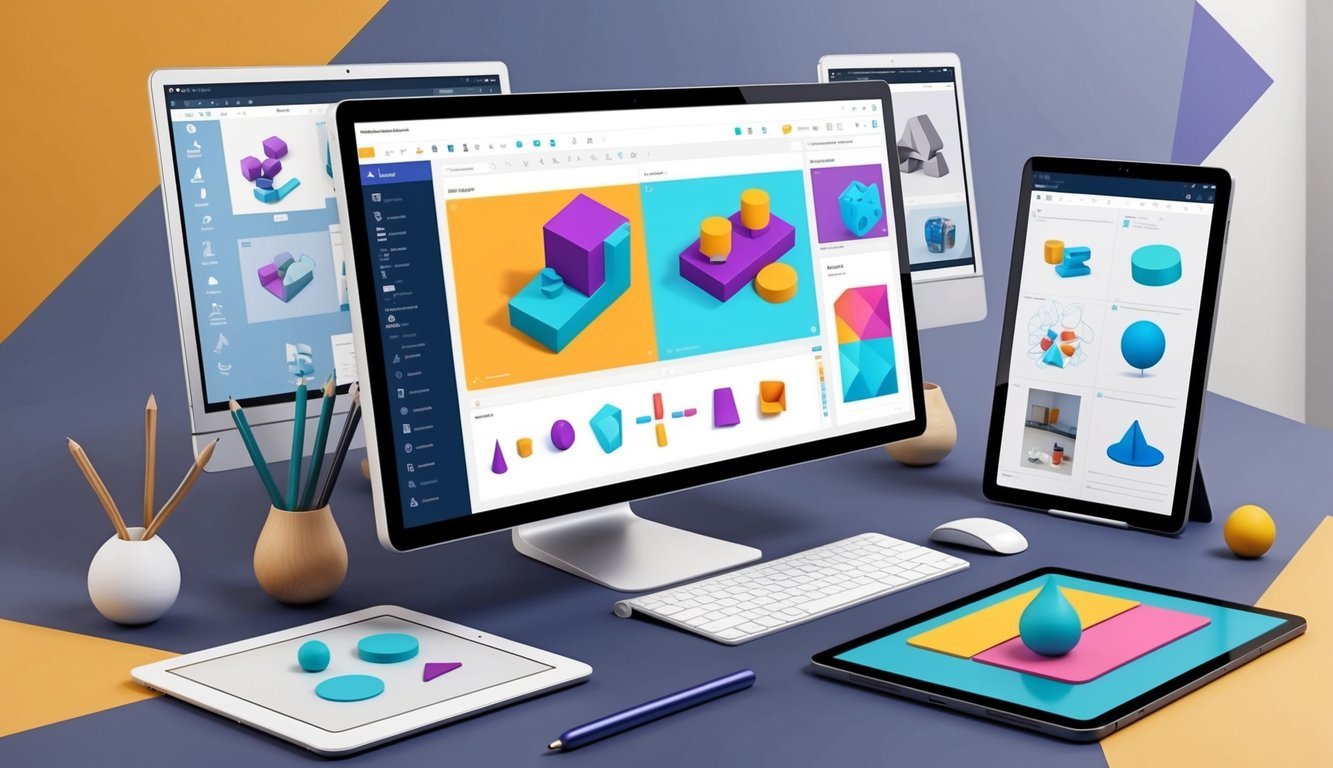
3D modeling is more than just a fun hobby—it’s a game-changer across industries.
It allows you to craft lifelike digital objects and environments that can influence creative work in various exciting ways.
Applications in Different Industries
3D modeling is essential across many sectors.
In architecture, for example, it helps in designing buildings before a single brick is laid, saving tons of time and cash.
Car manufacturers utilize it for testing new designs without the hefty expense of physical prototypes.
Ever seen those incredible creatures from animated films? Yup, that’s 3D modeling in action! And in the medical field, doctors rely on 3D models to plan surgeries, allowing them to visualize complex procedures before they ever pick up a scalpel.
It’s all about enhancing safety and precision.
Product designers also embrace 3D modeling to simulate how things will look and function prior to production.
It’s a massive time-saver that reduces waste and speeds up the design process.
Impact on Creative Workflows
This technology is shaking up creative workflows in the best way possible.
It provides the flexibility to try out new ideas and iterate quickly without starting from scratch.
You can examine your models from all angles, catching and fixing potential issues early on.
3D modeling tools also foster collaboration.
Sharing models online and getting quick feedback can make projects not only smoother, but way more enjoyable too.
Toss in some time savings by reusing existing parts for new projects, and you’re left with more time to flex your creative muscles.
Getting Started with 3D Modeling

Starting out in 3D modeling can seem daunting, but with the right approach and tools, you’ll be churning out awesome designs before you know it.
Let’s break down some essential techniques and how to pick the software that fits your needs best.
Essential Skills and Techniques
First things first, get comfortable navigating 3D space.
Learn to move, rotate, and scale objects in your chosen software.
Once you’ve got that down, start creating basic shapes like cubes, spheres, and cylinders.
Combine and modify these shapes to make more complex objects.
Don’t overlook texturing! It’s how you bring life to your models by adding color and detail.
The texturing course in Blender can guide you through this skill.
And let’s not forget lighting—good lighting can truly make your models stand out.
Experiment with different light types and positions to see how they change the feel of your work.
Choosing the Right Tools
Your choice of 3D modeling software can shape your entire experience.
For beginners, TinkerCAD is a fantastic free option.
It’s super user-friendly and runs directly in your web browser.
If you’re looking to dive into something more robust, consider Blender.
It’s packed with features, and best of all, it’s completely free! Plus, the wealth of online tutorials will help you climb the learning curve.
If character modeling is your passion, be sure to check out ZBrush.
It’s the go-to for sculpting fantastic detailed models.
Remember, the best tool is the one you’re comfortable with, so test a few different options.
Many offer free trials which are perfect for sampling!
Frequently Asked Questions
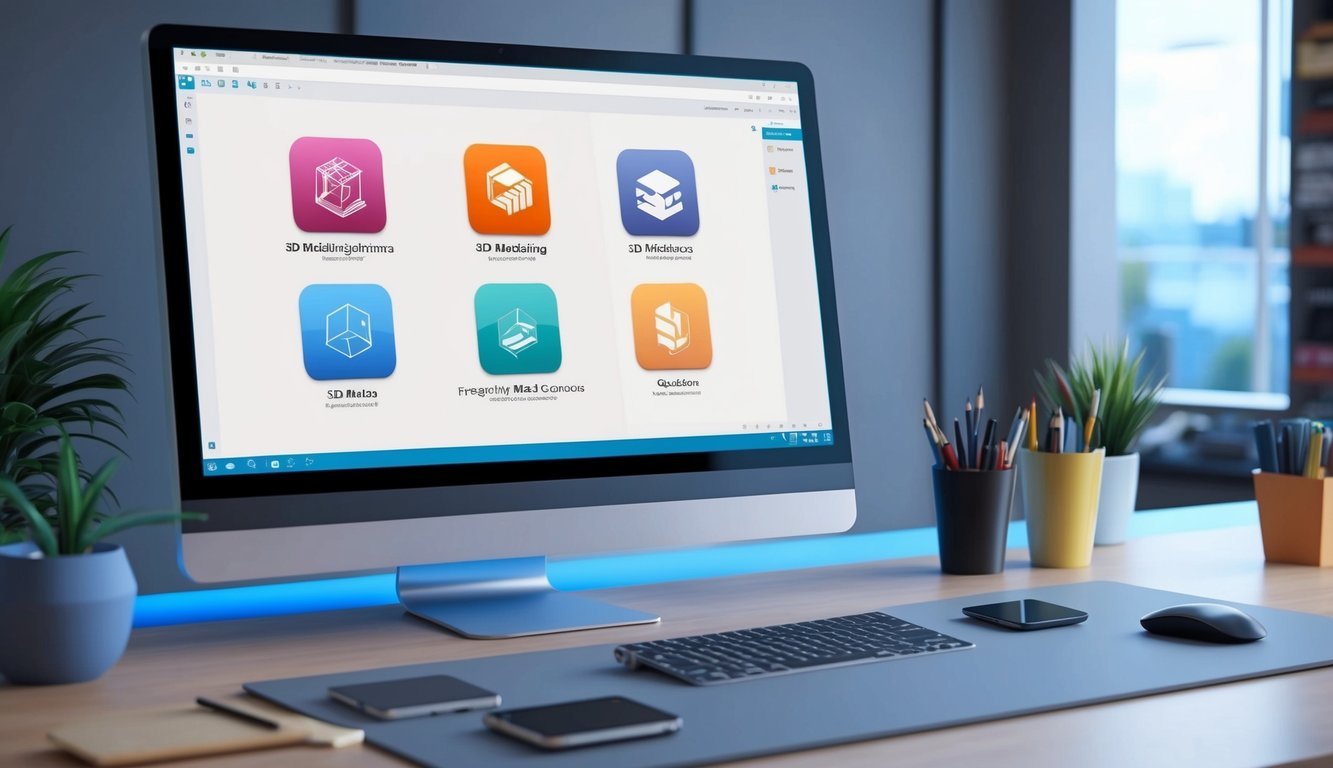
3D modeling software can be a bit of a puzzle at first, but let’s clear up some common questions about these programs and help you get started!
Which 3D software do most pros use?
Many professionals are fans of Autodesk Maya for animation and visual effects, especially in film and TV.
If you’re leaning toward product design, Autodesk 3ds Max is a top choice.
Game designers typically go for Blender or ZBrush.
What’s the easiest program to get started with 3D modeling?
SketchUp is a beginner’s best friend with its approachable design and plenty of tutorials to guide you.
Don’t count Blender out, either—it’s another great option with a huge community ready to help.
Are there any top-notch free 3D modeling programs out there?
You bet! Blender holds the crown as the best free 3D software, boasting capabilities that rival many paid options out there. Wings 3D is another solid free choice, especially for basic modeling.
What’s the best software for 3D modeling in engineering?
If you’re in engineering, Autodesk Fusion 360 is a fantastic option.
It’s perfect for product design and CAD projects.
Not to mention, SolidWorks is also a heavy hitter in engineering.
Both programs deliver powerful tools that make them invaluable in the field!
Could you list some popular 3D modeling programs for newbies?
Absolutely! Here are some great picks for beginners:
These all come with easy-to-use interfaces and a wealth of learning resources to help you get started!
What software should I learn for a career in 3D modeling?
If you’re aiming for a career in 3D modeling, you’ll want to get cozy with Autodesk Maya or Blender—both are industry favorites.
If your heart leans towards games, pick up ZBrush as well.
For those who lean towards product design, get a grip on Fusion 360 or SolidWorks.

